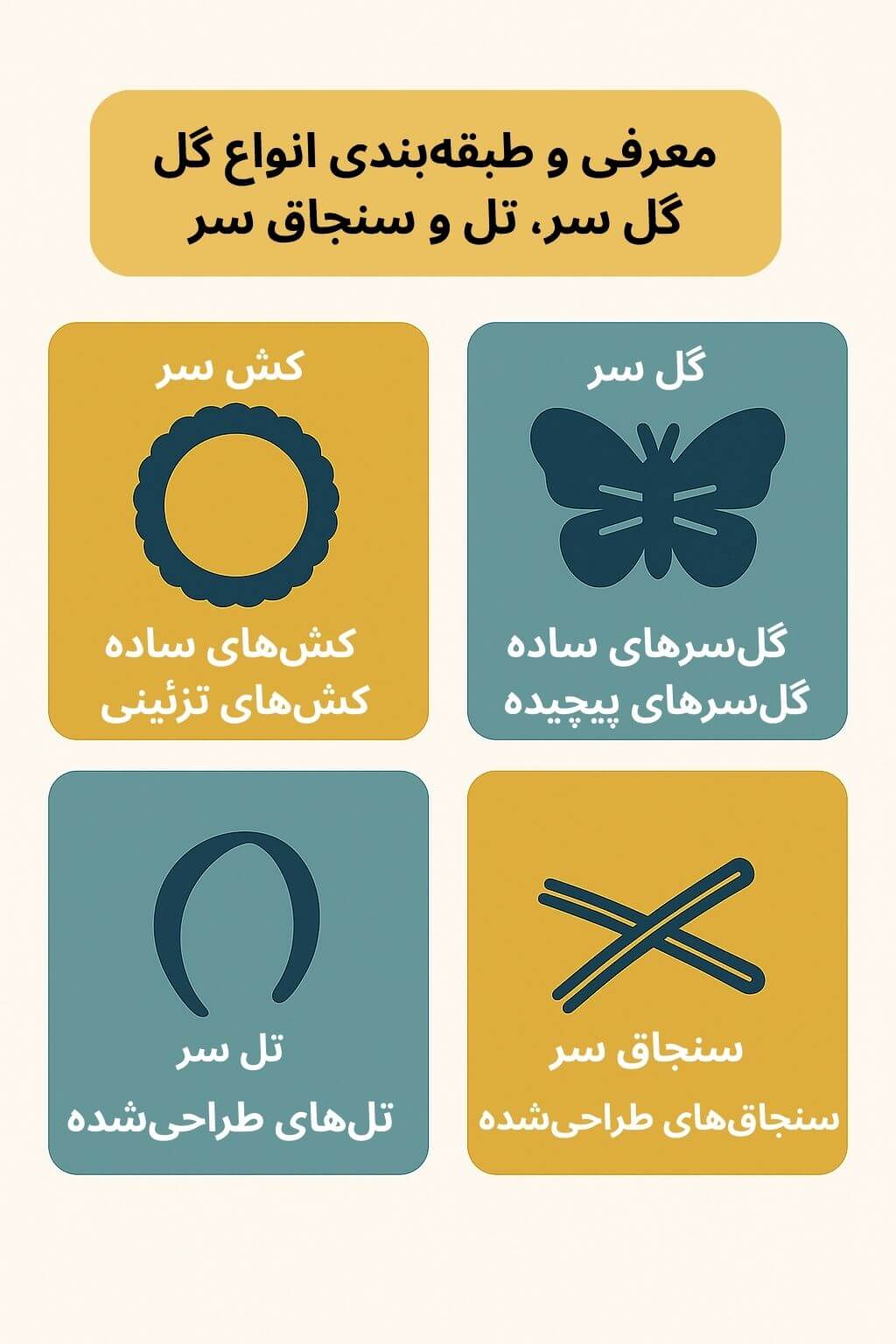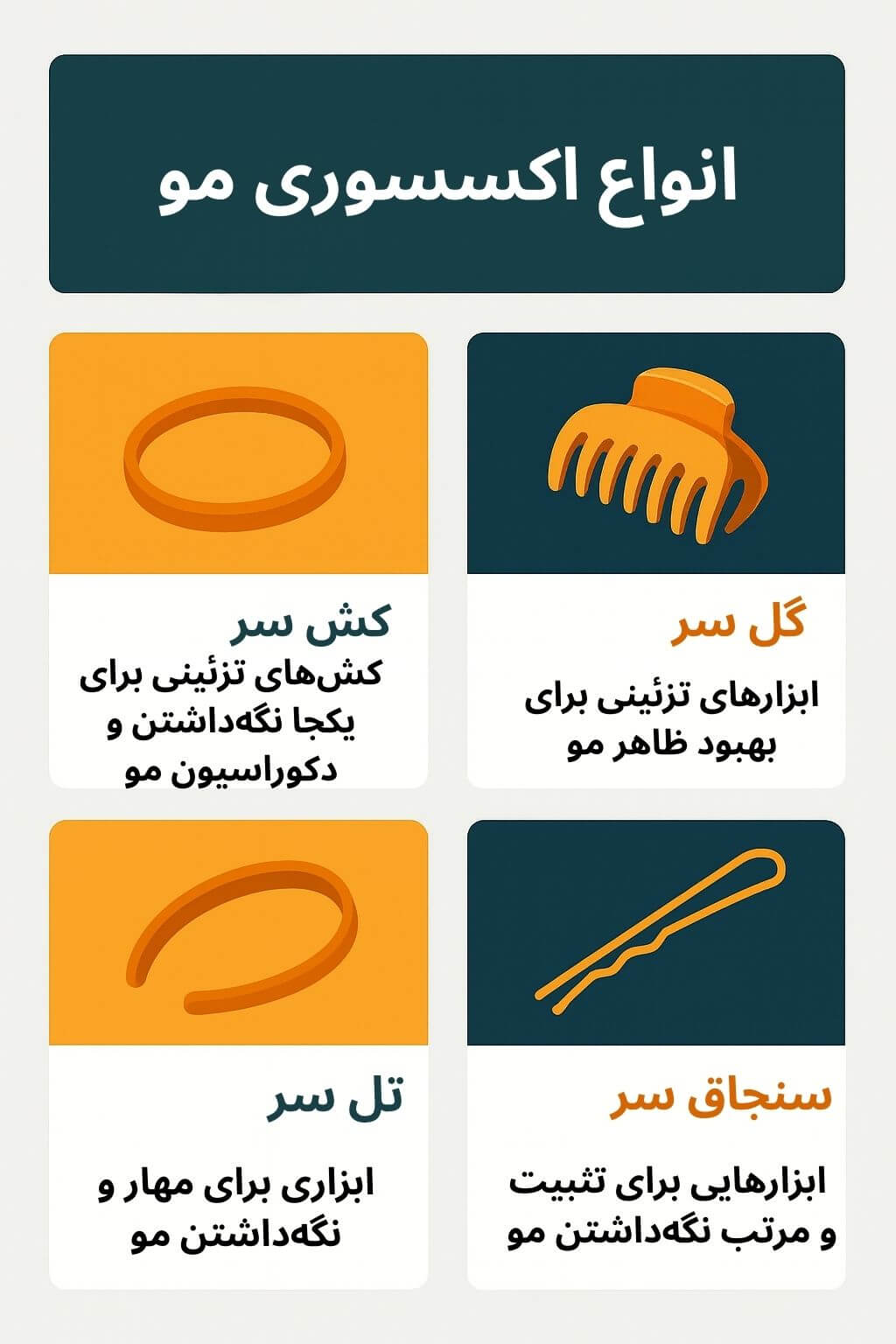Customs clearance of hair ties, hair clips, headbands, and hairpins (HS + documents and permits)
For estimating the time and cost of clearing hair ties, hair clips, headbands, and hairpins, contact the experts at Saba Tarkhis.
Immediate Free Consultation
1) Introduction and classification of hair ties, hair clips, headbands, and hairpins
Simple ties: Usually made from rubber, fabric, or plastic and primarily used to hold hair in place.
Decorative ties: These include additional embellishments such as rhinestones, artificial flowers, or other ornamental elements and are mainly used for aesthetics and decoration.
Hair clips: Hair clips are decorative tools used to enhance hair appearance and are typically made from materials such as metal, plastic, or fabric. Hair clips can be designed in different forms, including:
Simple clips: Basic designs with minimal decoration.
Complex clips: Featuring diverse designs and intricate decorations such as gemstones or artistic elements.
Headbands (Hairbands): Headbands are used to hold and adjust hair and are commonly made of metal, plastic, or fabric. Headbands may be:
Plain headbands: Basic, undecorated designs.
Decorative headbands: With added decorative features such as crystals or beads.
Hairpins: Hairpins are tools used to secure and hold hair in specific positions. Hairpins may include:
Simple pins: Made of metal or plastic with basic designs.
Designed pins: With complex designs and special decorations.
2) Key points in the clearance process + HS Code
HS for hair ties: Usually classified under apparel accessories. Depending on the material, the HS varies, but typically falls under 6117.80 (for textile products) or 3926.90 (for plastic products).
Hair clips: Code 9615.11 is used for hair ornaments, including hair clips.
Headbands: Headbands are usually under code 9615.19.
Hairpins: Code 9615.90 is recognized as the tariff code for hairpins.
| Item group | Short description | HS Code |
|---|---|---|
| Hair ties | Apparel accessories / hair fastener (by material) | 6117.80 / 3926.90 |
| Hair clip (claw/clip) | Hair ornaments | 9615.11 |
| Headband | Headband / hair band | 9615.19 |
| Hairpin | Pin / bobby pin / hair needle | 9615.90 |
Final classification depends on material, function, design, packaging, and end-use.
3) Special conditions for importing and exporting hair ties, hair clips, headbands, and hairpins
Specific permits
Health permits: Especially for goods related to beauty and hygiene—such as hair ties and hair clips—health certificates from regulatory bodies are required. These certificates ensure the products meet hygiene standards.
Quality permits: Some items may require quality approvals from recognized authorities. This is especially important for products directly used by consumers.
Import licenses: Some goods may require specific import licenses from government agencies or market regulators, particularly if the goods belong to specific categories or have unique features.
Documentation and regulations
Customs documents: Submitting accurate documents including purchase invoice, bill of lading, certificate of origin, and customs declaration is mandatory.
Conformity assessment: Some items may require checks against national or international standards, especially for consumer-facing imports.
Export
Compliance with destination country laws
Import regulations: Each destination country may have specific rules. Ensuring compliance—including hygiene rules, quality standards, and trade regulations—is essential.
Permits and certificates: Depending on the destination, special export permits or certificates may be required to meet the necessary standards.
Export documentation
Required documents: Including sales invoice, bill of lading, certificate of origin, and other certificates essential to complete export processes and comply with the destination’s regulations.
Export reports: Preparing and submitting accurate reports on export status, including cargo details, payment status, and delivery time.
4) Exporting and importing countries
China: As the largest producer and exporter—leveraging mass production and competitive prices—China is the primary supplier in the global market.
Türkiye: Due to high quality and strategic geography, Türkiye is a leading exporter in this segment.
India: India is also a major producer and supplier, playing an important role in the global market.
Middle Eastern and European countries: Various countries in these regions are also major importers due to high market demand.
5) Import and export volume

6) Documents required for customs clearance
1. Purchase invoice (Invoice)
Full item details: The invoice must include the full product name, technical specs, quantity, and unit of measure. For decorative items like clips and hairpins, the exact type and design must be specified.
Seller information: Name, address, and phone of the seller or supplier, along with tax ID and company registration number.
Price and payment terms: Unit price, total amount, and payment terms (cash or credit) must be clearly stated, including any discounts or special financial terms.
2. Bill of Lading
Type of B/L: Depending on transport mode (sea, air, or land), the bill must include the relevant type and number.
Transport details: Carrier details, shipment date, and route.
Consignee and origin details: Name/address of consignee and exporter, with contact and delivery information.
3. Certificate of Origin
Origin attestation: Confirms the goods were exported from a specific country and includes the exporting country and production/source details.
Certificate validity: Must be issued by competent authorities in the exporting country and validated by recognized economic institutions.
4. Customs Declaration
Declaration forms: Must be accurately completed based on the actual specifications of the goods, including value, quantity, and features.
Importer identity: Company registration number, tax ID, and full address must be correctly stated.
5. Health and quality certificates
Health certificates: For beauty/hygiene-related products like clips and hairpins valid certificates from recognized health authorities in the origin/production country are required.
Quality certificates: Proof of compliance with national/international standards; may include test results and endorsements from accredited institutions.
6. Import licenses
Specific licenses: Some goods may require special licenses from relevant bodies such as the Ministry of Industry, Mine and Trade, or other regulators.
License documentation: Application and issuance documents, including endorsements and compliance with specific import regulations.
7. Cargo insurance
Coverage: The insurance policy must show full coverage during transit, especially for valuable or fragile items.
Insurance details: Insured amount, conditions, and coverage period, issued by reputable insurers.
8. Tax declaration
Value Added Tax (VAT): Proof of VAT payment for imported goods, including receipt and VAT amount details.
Payment documents: Receipts for customs duties and taxes must accompany other documents.
9. Supplier certificate
Supplier details: Full supplier information name, address, phone plus verification of product data and supplier capability.
Quality and credibility: Certificates evidencing supplier credibility and product quality, including quality certifications and trade references.
10. Analysis certificate
Material analysis: For certain items, a certificate showing material analysis and product quality is required, including specialized test results and endorsements from accredited bodies.
Laboratory endorsements: Results and approvals from accredited laboratories recognized by international or national institutions must be provided.
Need precise HS (6117.80 / 3926.90 / 9615.11 / 9615.19 / 9615.90), health permits, and full document preparation? Our team manages the entire case end-to-end.
Submit Proforma RequestFrequently Asked Questions
What are the HS codes for hair ties, hair clips, headbands, and hairpins?
Depending on material/type: hair ties under 6117.80 or 3926.90, hair clips under 9615.11, headbands under 9615.19, and hairpins under 9615.90.
What permits are required to import these items?
As applicable: health certificates, quality approvals, and an import license, plus compliance with national/international standards; and core documents like invoice, bill of lading, certificate of origin, and customs declaration.
Which countries commonly supply and consume these items?
Major supply from China, Türkiye, and India. Consumer markets: Iran and other Middle Eastern and European countries with high demand for hair beauty/decor items.
Special customs services by Saba Brokerage
As a leading customs broker, our experienced and specialized team provides a comprehensive set of services. These include:
Specialized consulting
Customs laws and regulations: Accurate consulting on current rules to ensure compliance and prevent potential issues.
Tariff classification: Assistance in identifying and determining the appropriate tariff code for goods based on type and specifications.
Documents and paperwork: Full guidance on documents required for clearance, including purchase invoices, bills of lading, and certificates of origin.
Document management
Preparation: Careful preparation of all documents needed for clearance, including invoices, B/Ls, certificates of origin, and other necessary papers.
Quality control of documents: Ensuring correctness and completeness to facilitate clearance and reduce the chance of issues.
Processing and follow-up
Declaration follow-up: Rapid processing of customs declarations and documents, including all steps needed to streamline clearance and shorten delivery time.
Clearance management: Oversight of all stages from start to finish to ensure timely and correct completion.
Dispute resolution
Issue management: Handling potential problems and disputes, including communication with customs authorities for swift, efficient resolution.
Agreements and negotiations: Conducting necessary negotiations and agreements to remove obstacles and facilitate clearance.
Customized services
Special product clearance: Tailored services for unique client needs, including clearance of diverse products requiring extra care and precision.
Meeting specific needs: Providing solutions aligned with each client’s particular requirements and conditions.
Updates and reporting
Detailed reports: Up-to-date, accurate reports on clearance status, including cargo status, duties/taxes paid, and expected delivery time.
Status updates: Regular and timely information on progress and final outcomes.
By relying on our specialized services, you can enjoy a smooth and fast clearance experience, confident that every step is handled professionally and efficiently. With our extensive knowledge and experience, we will help you meet all customs clearance needs in the best possible way.
.png)
